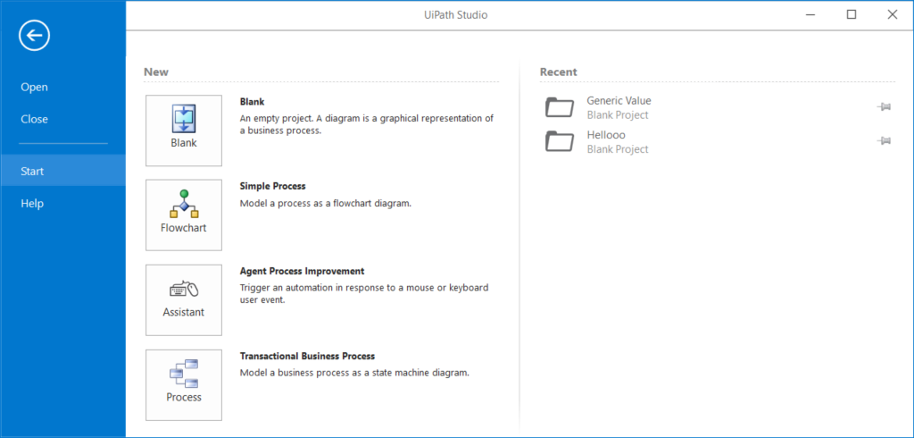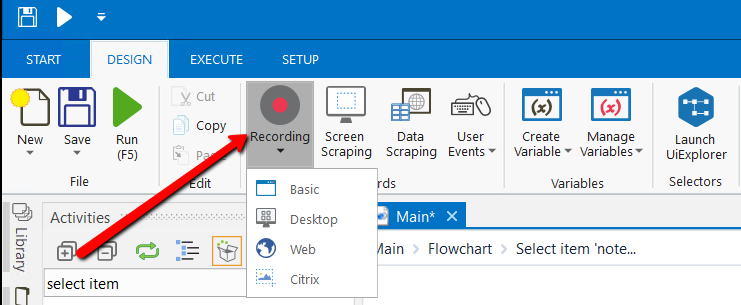UiPath is a Windows desktop Robotic Process Automation Software designed to automate business processes within organizations. It empowers businesses to perform better by automating any kind of repetitive tasks such as data entry, data or content migration, screen scraping, web scraping, and testing. UiPath is a leader among RPA technologies as it helps to automate numerous manual and repetitive tasks in minimal time at affordable costs. It is easy to integrate UiPath to any legacy system without much disruption. This is a user friendly software that adds to business innovation and profitability. In this post, we will evaluate the usability of the tool and how its application helps users.
Components of UiPath
UiPath resides within an open and extensible architecture that is suitable for highly scalable automation. Following are the three components of UiPath:
UiPath Studio
We can automate repetitive tasks with UiPath’s visual designer studio. It converts complex tasks into UI automation thus making the work easier and faster. UiPath Studio has two parts:
- The process designer, where the robot is built
- The execution part where the robot executes the automation

Robot
Responsible for executing the process built inside the studio. Robots can work unattended or as assistants.
UiPath Orchestrator
A web application that helps in deploying, scheduling, monitoring, and managing robots and processes.
Workflow
The process designer is a drag and drop tool with a flow-chart interface. The user doesn’t need to have extensive programming knowledge to use the tool. We can create processes just like how we prepare a flow chart. There are three main components in the workflow that helps to achieve UI automation.
- Screen Scraping
- Web Scraping
- User Activities and Events
Object or Action is the basic building block of a flowchart. There are hundreds of predefined actions available in UiPath. The tool also provides support for fully featured .NET library so that technical users can create and customize various actions.

The most powerful feature of UiPath is the RECORDER functionality. During recording, UiPath studio translates all the recorded events into flow chart actions.

UiPath Screen Scraping
Screen scraping is the soul. The scraping solution provides the ability to identify and recognize various UI elements within the screen. When a user hovers mouse on different UI elements, UiPath will highlight and zoom the element so that the user can make the right UI selection. When we select the right UI element, the UiPath process designer will automatically create a corresponding action within the flow chart. We can label each of these activities and screenshots of the targeted window will be added automatically to the flow chart. This will help us to read and understand various steps of scraping.

UiPath Web Scraping
UiPath offers advanced web scraping techniques with its suite of automation tools. Using its web scraping utility, UiPath can automatically launch a web browser, log on to a website, extract data spread across multiple pages, as well as filter and transform the data based on our requirements. It has the ability to scrape content from pages that require authentication and works like a real user accessing a browser.
User Activities and User Events in UiPath
There are two key methods to generate robotic process algorithms in UiPath:
- Using Recorder
- Using drag-and-drop individual activities in the flow-chart
User Activities
Any action done by the human user through mouse and keyboard are coded into activities. Apart from the regular browsing and navigation, there are several logical activities, system activities, programming activities and app integration activities that sync with applications like Excel, CSV, PDF, Databases, and Email. There are more than hundreds of individual activities that enable automation of the most complex tasks.
User Events
User events are for robots and humans working together. The application waits for a particular action from the user. When the user acts, the robot gets involved and performs its own tasks. The robot can perform without intervening in any of the user actions. For instance, the robot can wait for the user to click on a specific button. When the user clicks, the robot can scrape the data, perform calculations on it and send the results back to the human user.
To wind up, UiPath Studio is a proficient, feature-rich IDE (Integrated Development Environment) that allows you to visually design automation with a drag and drop editor. UiPath provides hundreds of predefined automation blocks like web scraping. The Recorder feature allows you to capture the steps of a manual task. During the recording process, all the user actions on the screen are surveyed and are translated into logical steps (workflow). The Screen Scraper Wizard and the Web Scraping Wizard enable you to derive data from any application.